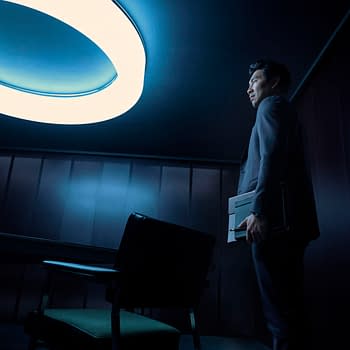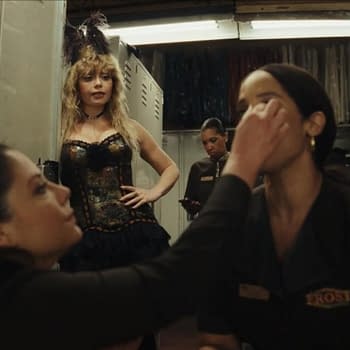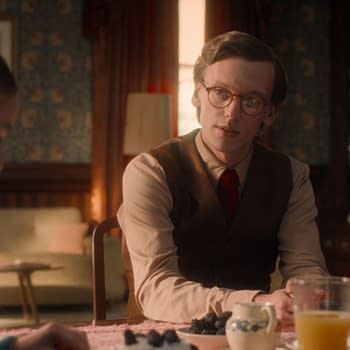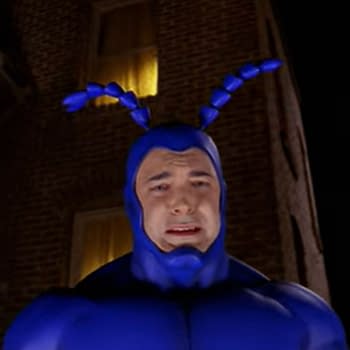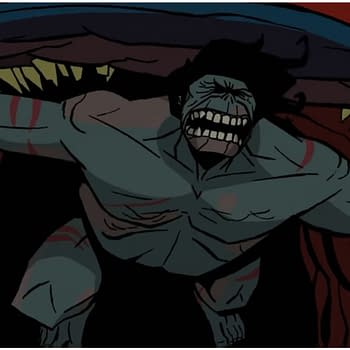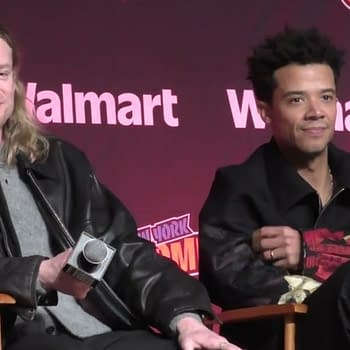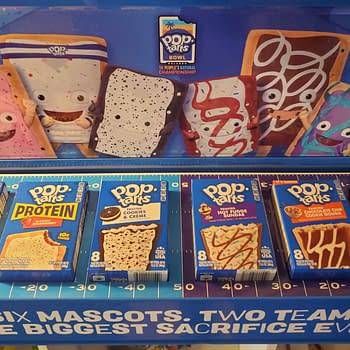Posted in: Paramount+, Star Trek, streaming, TV | Tagged: Benji Bakshi, exclusive, interview, paramount, star trek, Star Trek: Strange New Worlds
Strange New Worlds DP Benji Bakshi Talks "Star Trek," Season 2 & More
Cinematographer Benji Bakshi spoke with us about his work on Star Trek: Strange New Worlds and breaks down two of the season's episodes.
Cinematographer Benji Bakshi has always been a big believer in looking forward when it comes to technology. He blended his love for the arts and science into a career in filmmaking, and joining Star Trek: Strange New Worlds season two became an ideal canvas to bring his two joys into one. Bakshi spoke to Bleeding Cool about his history with the franchise, working with augmented reality to create the space that SNW occupies, the planning heading into season three before the WGA strike, and a breakdown of episode two "Ad Astra Per Aspera" and the recent episode four "Among the Lotus Eaters." The following contains minor spoilers.
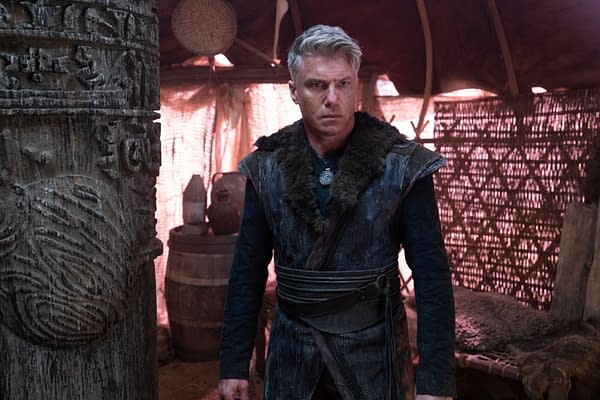
Star Trek: Benji Bakshi Boldly Going Where Few Have Gone Before
Bleeding Cool: How did you get involved with Star Trek: Strange New Worlds?
Bakshi: I got connected to the show through my agent, and I had some great conversations with Chris Fisher, who's the producing director on the show, and also Glen Keenan, CSC, who was the cinematographer for 'Star Trek: Discovery' and a lot of season one for 'Strange New Worlds.' They were looking for somebody to join them for season two, and we hit it off because my background started as a creative career as a classical cellist. I also had a deep interest in science and was pursuing astrophysics as a potential career. I hit a crossroads between art and science, deciding that filmmaking was the perfect amalgamation of both of those. We felt we had like minds, and I had never done Star Trek before, but it seemed like a perfect fit.
Did you follow 'The Original Series' or any of the spinoffs?
When I was younger, I watched reruns of a lot of the different series, particularly 'The Next Generation.' It took me a while to get into 'The Original Series' because, stylistically, it felt dated for me. As I matured, I fell in love with the older Trek, and it stuck with me as the epitome of sci-fi that there's always a continued relevance to it. I found that compared to some other sci-fi that would fall away or become obsolete, Trek always stuck around.

What was the inspiration for trying to develop the look and being as far as keeping on brand with the franchise?
'Strange New Worlds' thrives on the freedom to take each episode individually from the genre and tone which characters it's following. That's what attracted me to this collaboration and what is being able to do some great work that the audience is responding to because we didn't feel like we had to keep things completely cohesive. There are a few functions on the ship. There's the bridge itself, and trying to keep some consistency between 'TOS' as a prequel show, we must lead into things that people are familiar with, things like the Transporter Room, which served a function. With that said, anything else we're given the freedom to change the lighting, change how we shoot it, turn the camera upside down, have fun with it, try to support what the story is doing, and let these be more like mini-movies than a week-to-week continuation of the same thing. There is always going to be canon to adhere to from a familiarity standpoint, but we wanted to try to recreate that as much as we could so that audiences felt like they were getting something that they understood but was still fresh.
What were your biggest challenges to constructing and filming on set?
The recurring sets like Pike's [Anson Mount] quarters, the bridge, the sickbay, and similar ones are shot with more traditional filmmaking because they're physical. To double back on something I spoke of, we have a lot of the freedom to change the mood of things, like if they're docked, and it's a less active episode. We have a different quasi-power saving mode lighting, or there can be color introduced. In one episode, there's a power problem, and a lot of this ship is in the dark. We can play with that a lot, but you're aiming the camera at things that are there, so you don't have to think so many steps beyond that.
When we get into 'Strange New Worlds' with the planets and things like that, we're using the volume, 3D Unreal. We call it the AR wall, and that's a completely different way of shooting because you've got a built-in set extension in the 3D space that moves and reacts to the camera. We have tracking markers on top of the camera, and it moves with us. Those worlds take anywhere from three to four months of lead time to take in advance of shooting. Also, the technology of the wall is such that you can't aim cameras in the same direction, multiple cameras. You must make them perpendicular or opposing because the field of view that will be projected on the wall would conflict with two different sets of lenses or metrics.
It's a different way of shooting, but the wall can be rewarding because of what you're seeing on camera and because you're surrounded by screens and LEDs. You can use those screens to project light onto your characters. Instead of using traditional lights, we watch in our sets; our standing sets are embedded into the walls, ceilings, and set pieces, which is an ingenious way to do it. The wall itself, when we're in strange new worlds, can provide a sort of more naturalistic feel.
It felt like the right direction to take cinematography and live-action capture instead of going deeper into the green screen realm where nobody can see what's happening, especially the actors who had a hard time with that. We're all immersed in it. There is even an anecdote wherein one of the episodes, we were taking a break because we have masks, and we must take a fast break. The space was empty, but I went out there literally on another planet, set up a chair, sat there, and watched the sky move. It was fun and immersive, and it adds another level to the authenticity.
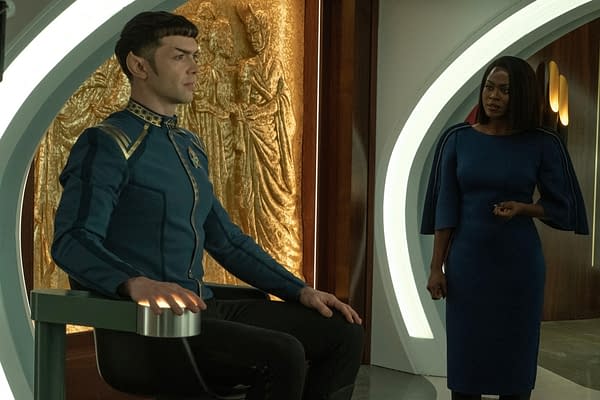
Can you break down how the special effects evolved to work on such a canvas as the AR wall?
I must give a lot of credit to Glen, who was the first-season cinematographer, and the team that put that together because, in terms of the AR wall, they built it from scratch. They had some examples to follow from 'The Mandalorian' and some other shows, but not everybody was doing it perfectly, and they wanted to all do it in their own way. Sometimes you build a volume that's completely enclosed with 360. Sometimes they're not enclosed, and there are different advantages to those.
They built their own stage the way they wanted to and had to figure out how to do it. Some shows don't have a ceiling. They have a traditional lighting grid with practical lighting. We built one that has a ceiling because it helps reflect, and we wanted to utilize the naturalism of what the wall will do to light the characters and the physical sets that are within the wall. There were a lot of growing pains learning that during season one, and we ended up having to shoot the bulk of their volume work at the end of the season.
The first season was also rife with a lot of COVID complications, so the schedule was getting a bit undone. By the time season two hit, thankfully, a lot of these kinks had been worked out, and I was able to benefit from the R&D and go right into the creative. From there, I'll just go back to the comment that it takes us three or four months of headspace and teamwork in conjunction with the visual effects department, production design, and art department to come up collaboratively with all these worlds. By the time we're shooting them, we're familiar with them. They're our babies, and we'll build things in like the time of day that it is, how the atmosphere on this planet works, what colors that terrain is, and things like that. In terms of setting the look. The first challenge is you have no limits [laughs]. You're spending a good amount of preparatory time creating limits based on the story of the world that you're telling.
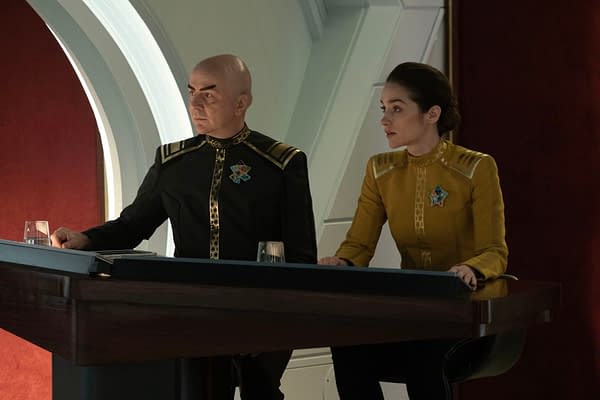
Was there a particular episode this season that was challenging for you guys?
It might sound cliche, but I love every episode I was a part of because they're all so different. I worked on episode two, season two, the courtroom drama ['Ad Astra Per Aspera'], which we were initially concerned that wasn't action-oriented enough, and we were curious how the audience would respond. To our pleasure, everyone is saying that it was such a gripping episode, not to mention one of the best Trek episodes of all time. That was an exercise in delving into the character and not letting anything distract us from the end. It was successful. I can talk about episode four, which takes us into spoiler territory. It takes us back to Rigel 7, which is this infamous planet of Captain Pike's past that goes all the way back to the pilot episode of the original series going on 60 years ago.
We're reimagining this planet and getting deeper into not only the physicality of returning there and the emotional trauma that it gives Captain Pike but also the psychological state that this planet imposes on those who visit it. That was a great thriller-style episode that pushed us more into the psychological tension and almost horrific aspect of the story as opposed to the interactivity between the characters. Each episode really takes you as a filmmaker into a completely different place. We're exercising different muscles, and as creatives, it keeps us fresh and acting more like our own audience. That's one of the reasons we're able to entertain the audience in the way we are that we're seeing it through their eyes.
That might be a little premature to talk about, but I know that I guess there was talk about season three, and with the WGA strike ongoing right now. Was there any talk about as far as the direction it was going to go or if you're going to be involved at all?
I was in Toronto this spring preparing for it, and up until the strike happened, our production was about to start, and it became increasingly clear that we might have a problem. The show decided to stop before we started production. It was a bit of a knee-jerk yank off the stage, but we were in the throngs preparing that. What I can say about it is that it's going to continue the same trends, and it's going to continue the same voice. What's interesting is when we were in the middle of.. smack in the middle of shooting season two, only then did season one start to air. We had the show go through season one, and we had prepared and even gone through multiple episodes shooting season two before we had any validation that what we were doing was working [laughs].
Similarly, we were in the throngs of getting ready to jump right back into season three with ideas in mind, not having any validation at all from season two because sometimes, when you swing a little harder or go a little deeper into the trends of a show, the audience doesn't always like it. Season two is aiming higher in a lot of ways. The genre is being pushed even further, and we didn't know if that was going to resonate with the audience or if we were going to break it. In season three, the trend was to basically continue to push as far as we could go.
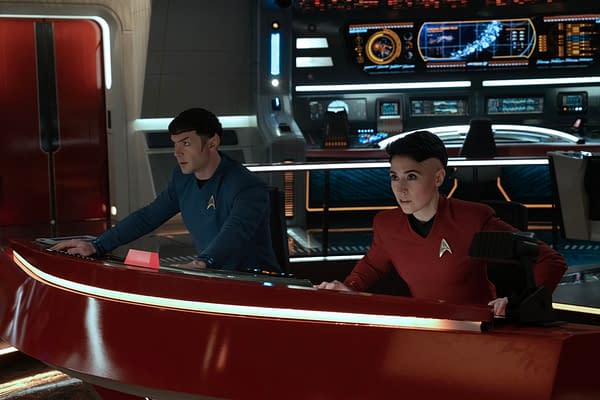
When did you think you hit your stride working on 'Strange New Worlds?'
Since I started on season two, it took me a few episodes. I would say about halfway through the season because, in my first episode, I was coming to set early every day. Every set I was shooting was new to me, and the blessing and curse of how the sets are built and how the show is shot is that lighting is embedded into almost every single surface that you can see. You have almost too many options. You can change this, you can change that, and you can recall certain presets of the way the room was lit for a different episode.
It's almost never going to be exactly what you need for this current episode, this current scene. I was sitting there scratching my head with all the possibilities, and by the time I tried more of them, did I really land in my comfort zone? That was a new experience for me. What I might call in the beginning "too many options." There was an interesting moment later in the season where the chief lighting technician went up to me after a shoot day, which went well, and I thought he was going to say, "Good job! We had a good day." Instead, he said, "Congratulations! You pitched a no-hitter." I'm like, "What are you talking about?" He said, "You didn't put a single movie light on a stand. You're only using the lights that were around you already built into the set."
Star Trek: Strange New Worlds streams Thursdays on Paramount+.






